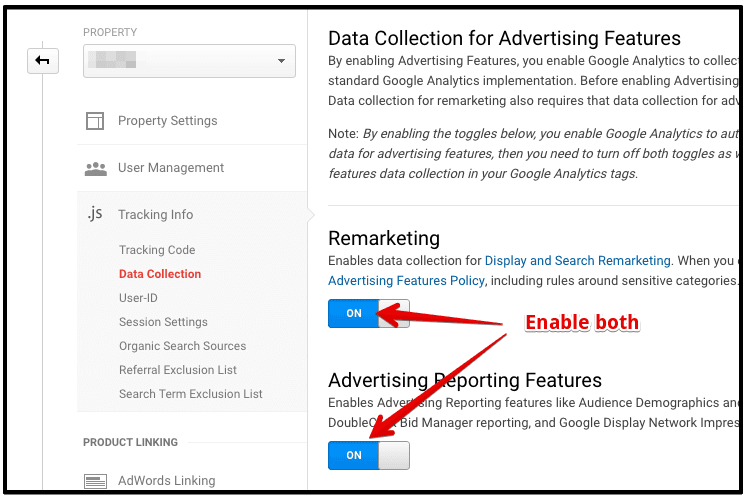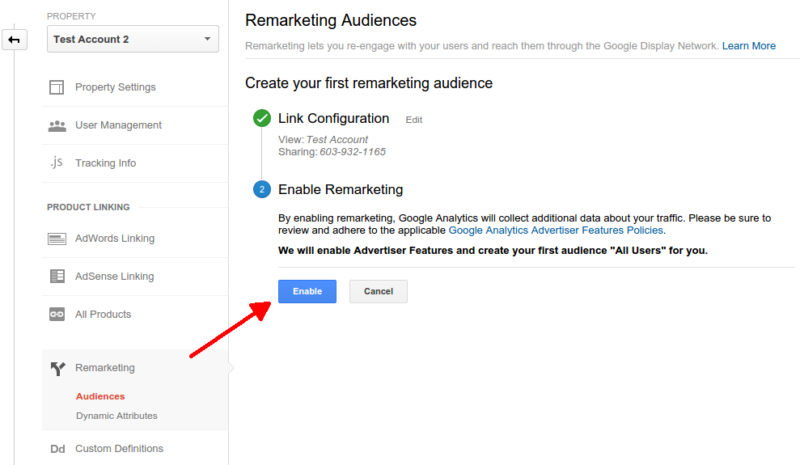Efficient Techniques for Remarketing in Google Analytics
In the world of electronic marketing, the world of remarketing in Google Analytics stands as a crucial device for businesses intending to improve their on the internet existence and conversion rates. Through calculated target market division, tailored remarketing checklists, and appealing ad creatives, companies can craft personalized campaigns that resonate with their target audience. The true success lies in the ability to continually improve and enhance these approaches based on performance metrics and information insights. By exploring the nuances of vibrant remarketing and leveraging innovative monitoring devices, organizations can open the complete capacity of their remarketing efforts, resulting in increased brand name presence and consumer involvement.
Target Market Segmentation
Making use of target market segmentation is a pivotal approach in enhancing the performance of remarketing projects within Google Analytics. By separating your audience right into unique teams based upon their behavior, demographics, or rate of interests, you can customize your advertising and marketing messages to be much more appropriate and appealing. This method allows you to provide customized advertisements to particular segments, boosting the possibility of conversion.

In addition, target market division aids you recognize the varying needs and preferences of various consumer groups, enabling you to craft even more engaging advertisement creatives and offers. This targeted method not only improves the effectiveness of your remarketing initiatives but also enhances overall project performance.
Establishing Remarketing Lists
To successfully implement remarketing strategies in Google Analytics, the preliminary action entails developing targeted remarketing lists based upon specific audience communications. Setting up remarketing lists permits online marketers to section their website site visitors right into various classifications based on their actions, such as pages checked out, items looked for, or actions handled the site. By defining these sectors, marketing professionals can then develop customized and relevant advertisements that target these certain teams, increasing the possibility of conversion.
Remarketing checklists can be established up making use of different criteria such as web page sees, period of visit, particular objective conclusions, or perhaps specific occasions caused on the web site. This degree of modification enables marketing professionals to customize their promotions to match the rate of interests and choices of each segmented audience, leading to higher engagement and conversion rates.
In addition, remarketing listings can additionally be produced based upon information imported from various other resources like CRM systems, permitting for much more accurate targeting. By establishing these targeted remarketing checklists, online marketers can successfully reach out to potential clients that have already shown rate of interest in their service or products, optimizing the impact of their remarketing campaigns.
Producing Compelling Ad Creatives
After segmenting web site visitors into targeted remarketing listings based on specific audience interactions, the next important action is to craft engaging advertisement creatives that reverberate with each fractional group's preferences and passions. The performance of remarketing campaigns heavily relies on the capacity of these ad creatives to capture the interest of the audience click to read and drive them to take the wanted activity.
To produce compelling ad creatives, it is important to understand the one-of-a-kind characteristics of each fractional team (What Is “Remarketing” In Google Analytics?). Tailoring the messaging, visuals, and supplies to align with the interests and preferences of the target market can significantly enhance Bonuses the possibilities of conversion. Using vibrant ads that immediately readjust material based upon the individual's behavior can also enhance the customization of the ad experience

Monitoring Performance and Optimization
Effective tracking of project efficiency and continuous optimization are essential aspects of effective remarketing methods in Google Analytics. To make sure the performance of remarketing campaigns, marketers should on a regular basis track key performance metrics such as click-through prices, conversion prices, and return on advertisement invest. By monitoring these metrics, online marketers can get useful insights right into the performance of their projects and recognize areas for renovation.
In Google Analytics, online marketers can leverage devices like conversion tracking and target market segmentation to analyze the efficiency of their remarketing projects. Conversion monitoring allows marketing experts to track particular actions that individuals take after clicking a remarketing advertisement, supplying beneficial information on the effectiveness of the project in driving preferred outcomes. Target market segmentation, on the various other hand, enables online marketers to divide their target market right into various sections based on various requirements such as demographics, actions, and interests, enabling for even more targeted and individualized remarketing initiatives.
Constant optimization is essential for maximizing the impact of remarketing campaigns. Marketing professionals need to make use of A/B testing to try out various advertisement creatives, messaging, and targeting approaches to identify one of the most efficient techniques. By routinely examining campaign performance information and making data-driven optimizations, marketing experts can ensure that their remarketing campaigns are accomplishing the wanted results and driving conversions properly.
Leveraging Dynamic Remarketing
Making use of dynamic remarketing can substantially boost the relevance and influence of targeted advertisements in Google Analytics. This advanced method allows advertisers to show tailored advertisements to customers who have formerly seen their anchor internet site or used their mobile app. By dynamically showing service or products that the customers have actually shown interest in, dynamic remarketing helps to maintain the brand fresh in their minds and encourages them to go back to finish a purchase.

Additionally, vibrant remarketing projects can be automated and enhanced in real-time based upon performance information, making certain that the ads stay appropriate and reliable. By leveraging dynamic remarketing in Google Analytics, advertisers can produce extra impactful and targeted marketing campaigns that resonate with their audience and drive results.
Conclusion
To conclude, efficient remarketing approaches in Google Analytics involve audience segmentation, targeted remarketing listings, compelling ad creatives, efficiency monitoring, and dynamic remarketing. By focusing on tailored ads, data evaluation, and constant optimization, companies can enhance conversion rates and drive interaction effectively. Leveraging tools like conversion tracking ensures that ads continue to be personalized and relevant, bring about total success in remarketing initiatives.
Through strategic target market division, customized remarketing checklists, and interesting advertisement creatives, businesses can craft personalized campaigns that resonate with their target audience. Utilizing dynamic ads that immediately readjust web content based on the individual's actions can also enhance the customization of the advertisement experience.
Conversion tracking enables online marketers to track certain actions that users take after clicking on a remarketing ad, providing important information on the performance of the project in driving desired results.Utilizing dynamic remarketing can significantly improve the relevance and impact of targeted advertisements in Google Analytics - What Is “Remarketing” In Google Analytics?.In conclusion, reliable remarketing approaches in Google Analytics entail audience segmentation, targeted remarketing lists, engaging advertisement creatives, performance tracking, and dynamic remarketing
Comments on “The Advantages of Using Remarketing In Google Analytics”